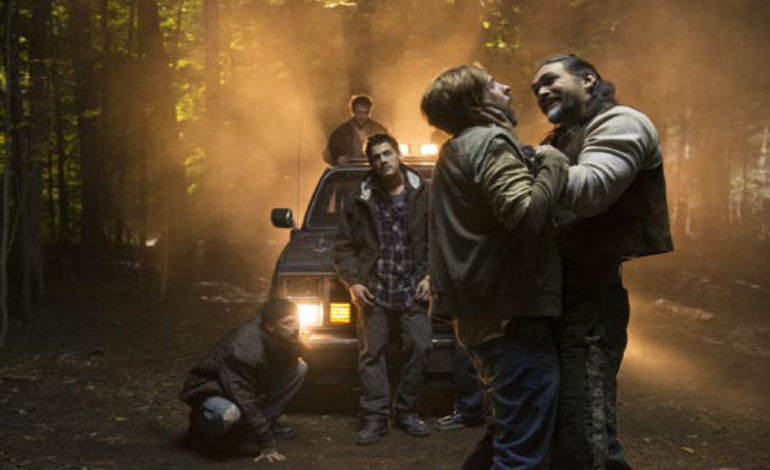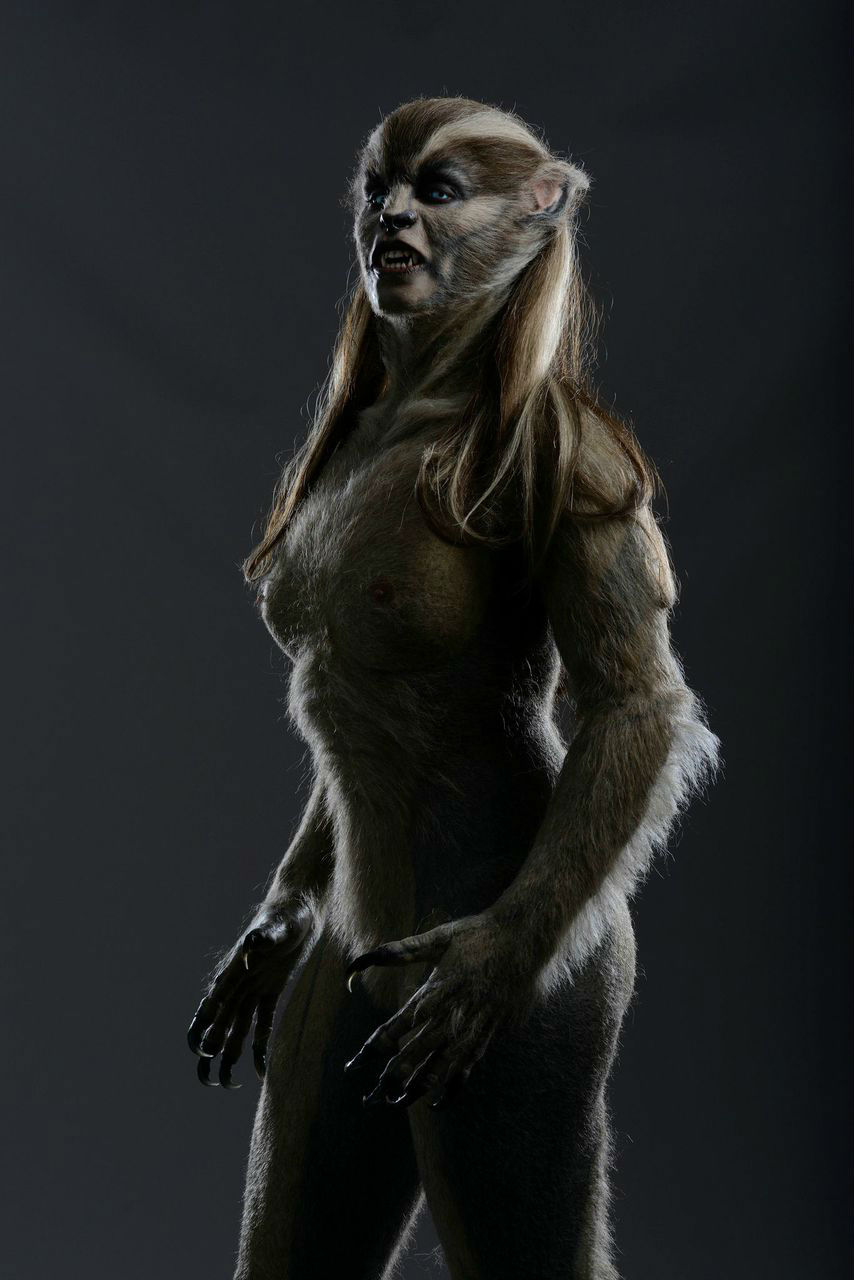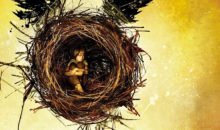Welcome To The World of Wolves: At The 2014 Toronto After Dark
What are wolves? Are they solitary predators that attack the weak and helpless? Are they a pack of monsters? Or are they a family that merely tries to survive their environment? David Hayter’s Wolves explores these ideas well and, dare I say, quite subversively.
Of course werewolves are subversive in themselves. I mean, think about it: historically they are generally portrayed as human beings with animals inside of them, or at least as something Other that only comes out under a full moon. They are the hunger, the passion, and the violence that are parts of us and the natural world that we keep at bay until such a time as they have to be unleashed. But that, of course, is not the whole story and I will get back to that thought soon, I promise.
Wolves starts off not unlike the 1985 comedy film Teen Wolf. You have a popular student named Cayden, who seems to be a fine specimen of a young man in all ways — a good student and football player — who finds out that there is a beast inside of him. However, there are no kindly secret werewolf parents to guide him or girls attracted to his occasional hairiness. There is fear though: and blood, and horror. The first part of the film is like watching the wolf take off his human skin, his bland human life, or — if you’d like — stepping out of the sheep’s clothing and leaving a great sense of bloodstained shame, and a fear of one’s self.
It’s like watching teenage angst: only with the trappings of tropes shed and murder.
Naturally, Cayden wants to know where he comes from and what he actually is. And then we are introduced to the small town of Lupine Ridge. And David Hayter continues to play with your expectations. He presents you with the first-person narrative voice-over and perspective of an otherwise decent young man who seems to have committed horrible atrocities when he isn’t himself, and then a town of seemingly hostile people in a bar who, well, you expect to act in a certain way.
Frankly, I was surprised that Cayden didn’t get into a physical fight right away in that setting and leave battered and bleeding at the onset. And I haven’t gotten to the character of Connor yet. Connor, for all intents and purposes, pretty much rules Lupine Ridge as something of an Alpha Male. Jason Momoa certainly, in terms of physicality, fits into that role but even he is subversive.
For instance, you might expect Connor to be a thug or a beast that pummels and rips apart anyone in his way off the bat. But you would be wrong. Instead, Connor watches. He watches. He waits and he extends all of his senses out and tries to reason things through his mind even as he subtly intimidates. And for an obvious antagonist who could easily fit the thug mold, Connor has, if you will pardon the pun, a rather biting wit and a sense of honour and personal rules not unlike someone of the Lawful Evil variety. You can see a little bit of Khal Drogo in Momoa’s mien in addition to some StarGate Atlantis Ronen with his sarcasm. He does terrible things but, as you watch the film, you will begin to figure out why. Momoa’s performance as Connor is impressive and entertaining.
I also like the addition of Stephen McHattie as the farmer John Tollerman. I admit when I first saw him in the bar I didn’t know whether he was a friend or foe. He was once Gabriel: an antagonist in the Beauty and Beast television series. So in a way it’s fitting that he would be dealing with a beast of a different kind in this story and he really grows on you. And you know, you definitely know when you see the enigmatic one-eyed, metal-braced Wild Joe that there is going to be some craziness and there is something strange about that man.
I think I would have liked to see more character development with the female character and interest Angelina and some of the other characters. Certainly, at first she does seem very resigned to being “mated with” by Connor as only other “Pureborn” werewolf in town, though — granted — she is only doing so to make sure he doesn’t kill her loved ones, and somehow ends up liking Cayden for some reason: as what seems to be a stereotypical love interest. And while she starts off as far more advanced than Cayden is in knowing who she is, she ends up falling a bit into the powerful female assisting the protagonist trope. Still, I do appreciate the fact that Angelina sets a lot of facts straight for Cayden. She has roamed these woods, metaphorically or otherwise, before and her insights make you begin to doubt some of Cayden’s own perceptions of things: particularly about himself.
But I think what really strikes me about this film is how Hayter handles werewolves. He starts us off making us think they are monsters because of their bestial nature. We find out about the differences between Mutts (who are humans affected by the lycanthropic bites of werewolves and are always weaker than real werewolves) and Pureborns (who are born werewolves). You can also observe that even in their human forms there are tells: such as the occasional luminescent glint in their eyes, demonstrations of acute senses as well as extraordinary reflexes and strength. In addition you begin to realize that there is a difference between werewolves that stay as wolves and those that have stayed in their human forms for quite some time.
In addition, Dave and Lou Elsey are masters of makeup. They manage to combine the grace and elegance of a wolf and the symmetry and proportions of the human form.
And David Hayter plays with film expectations of the werewolf trope. I like how werewolves apparently come from “back east”: seemingly a reference to their origins in Eastern European folklore for this film’s purposes. Yet I think my truly favourite scene was when John, his wife, and Cayden are watching television and The Lone Ranger is playing. If you didn’t think Hayter was winking at you before, he definitely does so at that point.
And just wait until you see what comes from that.
This is actually a good point to get into one other aspect of Hayter’s werewolves: mainly their nature. One expectation of the werewolf is that it is their wolf nature that ultimately makes them into monsters. Time and again we horror film watchers see this primal instinct destroy humanity and cause nothing but suffering in its wake.
But what if it isn’t the animal — the wolf — that is the monster?
If you look at ancient werewolf folklore, werewolves were often depicted as humans — sometimes witches and sorcerers — that took on wolf skins and committed horrible acts of cannibalism and murder. Human minds, twisted by their greed, lust, and madness do horrific things. Wolves are generally more straightforward and attack humans when they are attacked, sick, or starving. Humans kill for power and revenge.
Think about that when you see the end of the film. Think about what you actually see in the film. And then remember something else. Remember that Wolves, like its lycanthropes, has more than one skin and it doesn’t always show you its entire story … until something goads it into raw and bloody revelation.
A coming of age story with elements of gore and personal horror and a look at what it is to be both wolf and human. A strong film for the After Dark's Werewolf Night.











